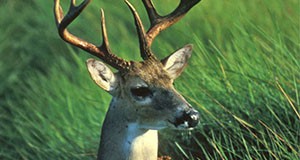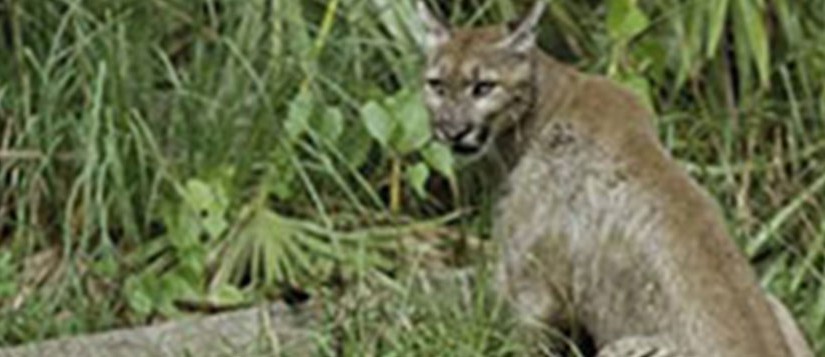Though deer rarely pose problems for people, it is important to understand the issues associated with deer and human-deer interactions. This 4-page fact sheet describes the biology of Florida’s white-tailed deer, the hazards associated with deer, and how to minimize these risks. Written by William M. Giuliano, Holly K. Ober, Lauren Watine, and Raoul Boughton, and published by the UF Department of Wildlife Ecology and Conservation, December 2014.
http://edis.ifas.ufl.edu/uw398
Tag: William Giuliano
Managing Conflicts with Wildlife: Living with Coyotes
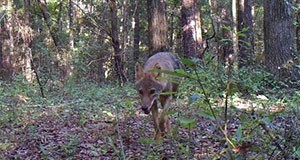 The omnivorous coyote is a relative newcomer to Florida that plays an important role in ecosystems and food webs. Of particular importance and possible benefit may be their potential ability to control populations of pest species such as some rodents. Although rare, there are situations where coyotes can become dangerous or damaging. In this 4-page fact sheet, we present some facts about coyotes, describe dangers and problems they may cause, and provide suggestions on how to cope with these issues. Written by Lauren Watine, William M. Giuliano, Holly K. Ober, Raoul Boughton, Alexander Gulde, Angeline Scotten, and published by the UF Department of Wildlife Ecology and Conservation, December 2014. (Photo: W. M. Giuliano, UF/IFAS)
The omnivorous coyote is a relative newcomer to Florida that plays an important role in ecosystems and food webs. Of particular importance and possible benefit may be their potential ability to control populations of pest species such as some rodents. Although rare, there are situations where coyotes can become dangerous or damaging. In this 4-page fact sheet, we present some facts about coyotes, describe dangers and problems they may cause, and provide suggestions on how to cope with these issues. Written by Lauren Watine, William M. Giuliano, Holly K. Ober, Raoul Boughton, Alexander Gulde, Angeline Scotten, and published by the UF Department of Wildlife Ecology and Conservation, December 2014. (Photo: W. M. Giuliano, UF/IFAS)
http://edis.ifas.ufl.edu/uw397
Managing Conflicts with Wildlife: Living with Panthers
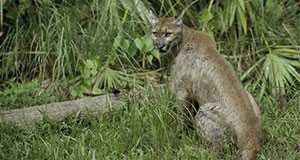 Panthers help maintain populations of some native species and control nuisance species such as wild hogs. They are generally secretive and rarely bother people, but there are rare situations where panthers can become dangerous or damaging. In this 4-page fact sheet, we present some facts about panthers, describe dangers and problems they may cause, and provide suggestions on how to cope with these issues. Written by William M. Giuliano, Holly K. Ober, Lauren Watine, Raoul Boughton, Eric Hellgren, Darrell Land, and Mark Lotz, and published by the UF Department of Wildlife Ecology and Conservation, December 2014.
Panthers help maintain populations of some native species and control nuisance species such as wild hogs. They are generally secretive and rarely bother people, but there are rare situations where panthers can become dangerous or damaging. In this 4-page fact sheet, we present some facts about panthers, describe dangers and problems they may cause, and provide suggestions on how to cope with these issues. Written by William M. Giuliano, Holly K. Ober, Lauren Watine, Raoul Boughton, Eric Hellgren, Darrell Land, and Mark Lotz, and published by the UF Department of Wildlife Ecology and Conservation, December 2014.
http://edis.ifas.ufl.edu/uw399
Managing Conflicts with Wildlife: Living with Wild Hogs
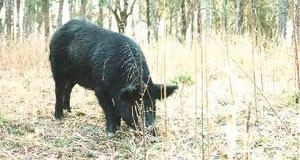 Wild hogs are a popular species, pursued and hunted by many throughout Florida. They are also an important food source for the endangered Florida panther.
Wild hogs are a popular species, pursued and hunted by many throughout Florida. They are also an important food source for the endangered Florida panther.
But there are situations where they can become dangerous or damaging. In this 4-page fact sheet, we present some facts about hogs, describe dangers and problems they may cause, and provide suggestions on how to cope with these issues. Written by William M. Giuliano, Holly K. Ober, Lauren Watine, Raoul Boughton, and Don Coyner, and published by the UF Department of Wildlife Ecology and Conservation, December 2014. (Photo: M.S. Smith)
http://edis.ifas.ufl.edu/uw400
Managing Conflicts with Wildlife: Living with Bears
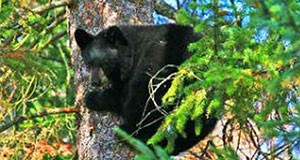 Black bears are omnivorous, enigmatic animals that help maintain healthy forests by dispersing seeds of plants they eat. Bear watching is a favorite pastime for many Floridians throughout the state. Bears are generally secretive and rarely a problem for people. But there are rare situations where they can become dangerous or damaging. In this 4-page fact sheet, we present some facts about bears, describe dangers and problems they may cause, and provide suggestions on how to cope with these issues. Written by William M. Giuliano, Holly K. Ober, Lauren Watine, Eric Hellgren, Raoul Boughton, and Dave Telesco, and published by the UF Department of Wildlife Ecology and Conservation, December 2014.
Black bears are omnivorous, enigmatic animals that help maintain healthy forests by dispersing seeds of plants they eat. Bear watching is a favorite pastime for many Floridians throughout the state. Bears are generally secretive and rarely a problem for people. But there are rare situations where they can become dangerous or damaging. In this 4-page fact sheet, we present some facts about bears, describe dangers and problems they may cause, and provide suggestions on how to cope with these issues. Written by William M. Giuliano, Holly K. Ober, Lauren Watine, Eric Hellgren, Raoul Boughton, and Dave Telesco, and published by the UF Department of Wildlife Ecology and Conservation, December 2014.
http://edis.ifas.ufl.edu/uw396
Managing Conflicts with Wildlife: Living with Alligators
 American alligators are found in only 10 states in the southeastern U.S. In most situations alligators do not harm people, but they can pose potential dangers to people in some situations. In this 3-page fact sheet, we present some facts about alligators, describe their potential threats to people and pets, and provide suggestions on how to cope with these risks. Written by Holly K. Ober, Harry J. Dutton, Allan R. Woodward, Lindsay J. Hord, and William M. Giuliano, and published by the UF Department of Wildlife Ecology and Conservation, November 2014.
American alligators are found in only 10 states in the southeastern U.S. In most situations alligators do not harm people, but they can pose potential dangers to people in some situations. In this 3-page fact sheet, we present some facts about alligators, describe their potential threats to people and pets, and provide suggestions on how to cope with these risks. Written by Holly K. Ober, Harry J. Dutton, Allan R. Woodward, Lindsay J. Hord, and William M. Giuliano, and published by the UF Department of Wildlife Ecology and Conservation, November 2014.
http://edis.ifas.ufl.edu/uw393
Managing Conflicts with Wildlife: Living with Frogs
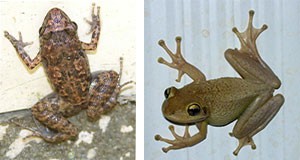 Frogs control garden pests such as insects and slugs and serve as a food source for many larger wildlife species. Research on the substances frogs secrete through their skins has even led to the creation of new painkillers and antibiotics. Most frogs in Florida are reclusive and harmless to people, but two species of frogs that have invaded Florida can be harmful to humans and their pets. This 4-page fact sheet presents some facts about native frogs, describes the problems invasive frogs cause, and provides suggestions on how to cope with problem frogs. Written by Steve Johnson, Holly K. Ober, and William M. Giuliano, and published by the UF Department of Wildlife Ecology and Conservation, November 2014. (Photos: Steve Johnson, UF/IFAS)
Frogs control garden pests such as insects and slugs and serve as a food source for many larger wildlife species. Research on the substances frogs secrete through their skins has even led to the creation of new painkillers and antibiotics. Most frogs in Florida are reclusive and harmless to people, but two species of frogs that have invaded Florida can be harmful to humans and their pets. This 4-page fact sheet presents some facts about native frogs, describes the problems invasive frogs cause, and provides suggestions on how to cope with problem frogs. Written by Steve Johnson, Holly K. Ober, and William M. Giuliano, and published by the UF Department of Wildlife Ecology and Conservation, November 2014. (Photos: Steve Johnson, UF/IFAS)
http://edis.ifas.ufl.edu/uw394
Managing Conflicts with Wildlife: Living with Snakes
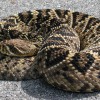 Snakes provide numerous benefits to people and to the environment, by controlling rat and mice populations in the environment, for example. Or in the laboratory, where pygmy rattlesnake venom research helped develop medicine to thin the blood of heart attack patients. Most snakes are secretive and rarely bother people, but there are situations where some snakes can become dangerous. In this 4-page fact sheet, we present some facts about snakes, describe dangers they may cause, and provide suggestions on how to cope with these dangers. Written by Holly K. Ober, Steve Johnson, and William M. Giuliano, and published by the UF Department of Wildlife Ecology and Conservation, November 2014. (Photo: Steve Johnson)
Snakes provide numerous benefits to people and to the environment, by controlling rat and mice populations in the environment, for example. Or in the laboratory, where pygmy rattlesnake venom research helped develop medicine to thin the blood of heart attack patients. Most snakes are secretive and rarely bother people, but there are situations where some snakes can become dangerous. In this 4-page fact sheet, we present some facts about snakes, describe dangers they may cause, and provide suggestions on how to cope with these dangers. Written by Holly K. Ober, Steve Johnson, and William M. Giuliano, and published by the UF Department of Wildlife Ecology and Conservation, November 2014. (Photo: Steve Johnson)
http://edis.ifas.ufl.edu/uw395
Tips for Integrating Land and Wildlife Management: Deer in Ranchlands (WEC330/UW375)
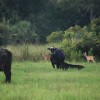 In addition to having generally low-quality foods, ranchlands often have a low diversity of food sources, further reducing the quality of habitat for deer. Ranchland management for deer should therefore focus on providing a diversity of abundant, high-quality foods. This 2-page fact sheet provides some deer habitat improvement tips that focus primarily on raising the quality of deer forage but that also will help you grow better cover by improving plant diversity and productivity. Written by William M. Giuliano, John M. Olson, and Cailey Thomas, and published by the UF Department of Wildlife Ecology and Conservation, January 2013.
In addition to having generally low-quality foods, ranchlands often have a low diversity of food sources, further reducing the quality of habitat for deer. Ranchland management for deer should therefore focus on providing a diversity of abundant, high-quality foods. This 2-page fact sheet provides some deer habitat improvement tips that focus primarily on raising the quality of deer forage but that also will help you grow better cover by improving plant diversity and productivity. Written by William M. Giuliano, John M. Olson, and Cailey Thomas, and published by the UF Department of Wildlife Ecology and Conservation, January 2013.
http://edis.ifas.ufl.edu/uw375
Freshwater Turtles of Belize (WEC328/UW373)
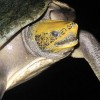 Belize, a country rich in natural resources and diverse wildlife, is home to nine species of freshwater turtles. Among these is the critically endangered hicatee, which has been eliminated in most of its range as a result of hunting and habitat loss. Freshwater turtles live in rivers, creeks, and lagoons, and build their nests on the banks. They eat a variety of plants, aquatic vegetation, and fruits. However, little is known about Belize’s unique turtle species. This 2-page fact sheet will help people identify, understand, and conserve these treasured resources. Written by Venetia Briggs, Lauren Watine, Dustin Smith, Robin Bijlani, Rebecca Harvey, William Giuliano, and Frank Mazzotti, and published by the UF Department of Wildlife Ecology and Conservation, January 2013.
Belize, a country rich in natural resources and diverse wildlife, is home to nine species of freshwater turtles. Among these is the critically endangered hicatee, which has been eliminated in most of its range as a result of hunting and habitat loss. Freshwater turtles live in rivers, creeks, and lagoons, and build their nests on the banks. They eat a variety of plants, aquatic vegetation, and fruits. However, little is known about Belize’s unique turtle species. This 2-page fact sheet will help people identify, understand, and conserve these treasured resources. Written by Venetia Briggs, Lauren Watine, Dustin Smith, Robin Bijlani, Rebecca Harvey, William Giuliano, and Frank Mazzotti, and published by the UF Department of Wildlife Ecology and Conservation, January 2013.
http://edis.ifas.ufl.edu/uw373
Tips for Integrating Land and Wildlife Management: Deer in Forests (WEC329/UW374)
 Prized by hunters and wildlife enthusiasts alike, white-tailed deer are a popular species found throughout Florida. As such, they are often the focus of management for landowners, managers, and lessees who want to improve deer populations while maintaining other land uses such as timber production. This 2-page fact sheet provides some deer habitat improvement tips that focus primarily on raising the quality of deer forage but that also will help you grow better cover by improving plant diversity and productivity. Written by William M. Giuliano, John M. Olson, and Cailey Thomas, and published by the UF Department of Wildlife Ecology and Conservation, January 2013.
Prized by hunters and wildlife enthusiasts alike, white-tailed deer are a popular species found throughout Florida. As such, they are often the focus of management for landowners, managers, and lessees who want to improve deer populations while maintaining other land uses such as timber production. This 2-page fact sheet provides some deer habitat improvement tips that focus primarily on raising the quality of deer forage but that also will help you grow better cover by improving plant diversity and productivity. Written by William M. Giuliano, John M. Olson, and Cailey Thomas, and published by the UF Department of Wildlife Ecology and Conservation, January 2013.
http://edis.ifas.ufl.edu/uw374
Tips for Integrating Land and Wildlife Management: Quail and Timber (WEC331/UW376)
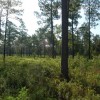 In Florida, changes in forest management practices during the past 50+ years have led to declines in quail habitat and populations. Important changes involve the use of fire and conversion of native forests to commercial pine plantations. A lack of fire and other disturbance has often led to closed-canopy forests with dense undergrowth that lack important quail habitat components. This 2-page fact sheet provides several quail habitat improvement tips that focus on diversifying the plant species and structural composition and increasing early successional communities dominated by herbaceous plants. Written by William M. Giuliano and Lauren Watine, and published by the UF Department of Wildlife Ecology and Conservation, January 2013.
In Florida, changes in forest management practices during the past 50+ years have led to declines in quail habitat and populations. Important changes involve the use of fire and conversion of native forests to commercial pine plantations. A lack of fire and other disturbance has often led to closed-canopy forests with dense undergrowth that lack important quail habitat components. This 2-page fact sheet provides several quail habitat improvement tips that focus on diversifying the plant species and structural composition and increasing early successional communities dominated by herbaceous plants. Written by William M. Giuliano and Lauren Watine, and published by the UF Department of Wildlife Ecology and Conservation, January 2013.
http://edis.ifas.ufl.edu/uw376
Tips for Integrating Land and Wildlife Management: Quail in Cattle Country (WEC332/UW377)
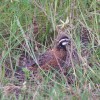 This 2-page fact sheet provides specific tips to improve quail habitat in cattle country that focus on diversifying the plant species and structural composition and increasing early successional communities dominated by herbaceous plants. Written by William M. Giuliano and Lauren Watine, and published by the UF Department of Wildlife Ecology and Conservation, January 2013.
This 2-page fact sheet provides specific tips to improve quail habitat in cattle country that focus on diversifying the plant species and structural composition and increasing early successional communities dominated by herbaceous plants. Written by William M. Giuliano and Lauren Watine, and published by the UF Department of Wildlife Ecology and Conservation, January 2013.
http://edis.ifas.ufl.edu/uw377
Una Guía para Convivir con Felinos Silvestres (WEC316/UW361)
 En Belice, el Centro de Investigaciones de Campo Lamanai (CICL) y la Universidad de la Florida están estudiando los gatos usando trampas-cámaras las cuales se han colocado dentro de varios locales de terrenos privados. Contrario a lo que la gente considera, esta investigación sugiere que existe una mayor cantidad de felinos silvestres habitando cerca de las fincas. This 3-page informational brochure is the Spanish language version of A Guide to Living with Wildcats (WEC314/UW359). It highlights 5 species of wildcats living in the area of the study, tips for keeping livestock safe, and local contacts. Written by Venetia S. Briggs, Rebecca G. Harvey, Frank J. Mazzotti, and William M. Giuliano, and published by the UF Department of Wildlife Ecology and Conservation, October 2011.
En Belice, el Centro de Investigaciones de Campo Lamanai (CICL) y la Universidad de la Florida están estudiando los gatos usando trampas-cámaras las cuales se han colocado dentro de varios locales de terrenos privados. Contrario a lo que la gente considera, esta investigación sugiere que existe una mayor cantidad de felinos silvestres habitando cerca de las fincas. This 3-page informational brochure is the Spanish language version of A Guide to Living with Wildcats (WEC314/UW359). It highlights 5 species of wildcats living in the area of the study, tips for keeping livestock safe, and local contacts. Written by Venetia S. Briggs, Rebecca G. Harvey, Frank J. Mazzotti, and William M. Giuliano, and published by the UF Department of Wildlife Ecology and Conservation, October 2011.
http://edis.ifas.ufl.edu/uw361
A Guide to Living with Wildcats [brochure] (WEC314/UW359)
 In Belize, the Lamanai Field Research Center and University of Florida are studying cats using camera traps placed in a variety of locations on private lands. This research suggests that more wild cats live near farms than people are aware of. This 3-page informational brochure highlights 5 species of wildcats living in the area of the study, tips for keeping livestock safe, and local contacts. Written by Venetia S. Briggs, Rebecca G. Harvey, Frank J. Mazzotti, and William M. Giuliano, and published by the UF Department of Wildlife Ecology and Conservation, October 2011.
In Belize, the Lamanai Field Research Center and University of Florida are studying cats using camera traps placed in a variety of locations on private lands. This research suggests that more wild cats live near farms than people are aware of. This 3-page informational brochure highlights 5 species of wildcats living in the area of the study, tips for keeping livestock safe, and local contacts. Written by Venetia S. Briggs, Rebecca G. Harvey, Frank J. Mazzotti, and William M. Giuliano, and published by the UF Department of Wildlife Ecology and Conservation, October 2011.
http://edis.ifas.ufl.edu/uw359
Farmer Perceptions of Wildlife Damage to Row Crops in North Florida (WEC311/UW356)
 How can we determine the just how much of an impact wildlife damage has on growers? This 4-page fact sheet presents the results of a survey of a sample of growers across the state. Written by Holly K. Ober, Gerald R. Edmondson, William M. Giuliano, David L. Wright, John Atkins, Andy Andreasen, Shep Eubanks, Libbie Johnson, Charles Brasher, and Greg Hicks, and published by the UF Department of Wildlife Ecology and Conservation, July 2011.
How can we determine the just how much of an impact wildlife damage has on growers? This 4-page fact sheet presents the results of a survey of a sample of growers across the state. Written by Holly K. Ober, Gerald R. Edmondson, William M. Giuliano, David L. Wright, John Atkins, Andy Andreasen, Shep Eubanks, Libbie Johnson, Charles Brasher, and Greg Hicks, and published by the UF Department of Wildlife Ecology and Conservation, July 2011.
http://edis.ifas.ufl.edu/uw356
WEC299/UW344 Wildlife Ecology and Conservation: Extension Programs and Faculty
WEC299, a 4-page fact sheet by William Giuliano and Emma Willcox, Describes the department’s extension programs and provides a directory of extension faculty. Published by the UF Department of Wildlife Ecology and Conservation, November 2010. http://edis.ifas.ufl.edu/uw344
WEC277/UW322 Wild Hogs in Florida: Ecology and Management
WEC277, an 11-page illustrated fact sheet by William M. Giuliano, provides an overview of wild hogs in Florida — history, distribution, description, habitat relationships, general biology, problems, management, hunting, and other control measures. Published by the UF Department of Wildlife Ecology and Conservation, March 2010.
http://edis.ifas.ufl.edu/uw322
WEC268/UW313 Isolated Wetlands and Breeding Amphibians
WEC268, a 4-page illustrated fact sheet by Taryn A. Sudol, Emma V. Willcox, and William Giuliano, explains what isolated wetlands are, why they are important, and how they can be managed for amphibians. Published by UF Department of Wildlife Ecology and Conservation, September 2009.
http://edis.ifas.ufl.edu/UW313
WEC362/UW307 The Florida Mouse
WEC-362, a 4-page illustrated fact sheet by Hannah H. Willingham, Emma V. Willcox, and William M. Giuliano, describes this brownish to tawny colored rodent that lives in fire-maintained upland habitats in Florida — identification, habitat, distribution, behavior, conservation status, and habitat management. Includes references. Published by the UF Department of Wildlife Ecology and Conservation, September 2009.
http://edis.ifas.ufl.edu/UW307
